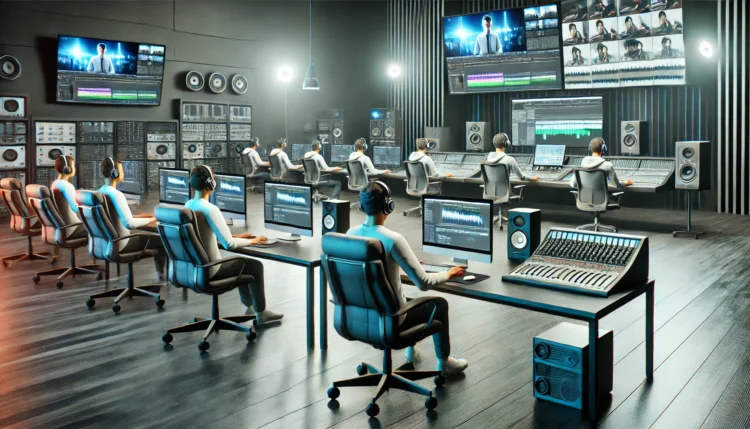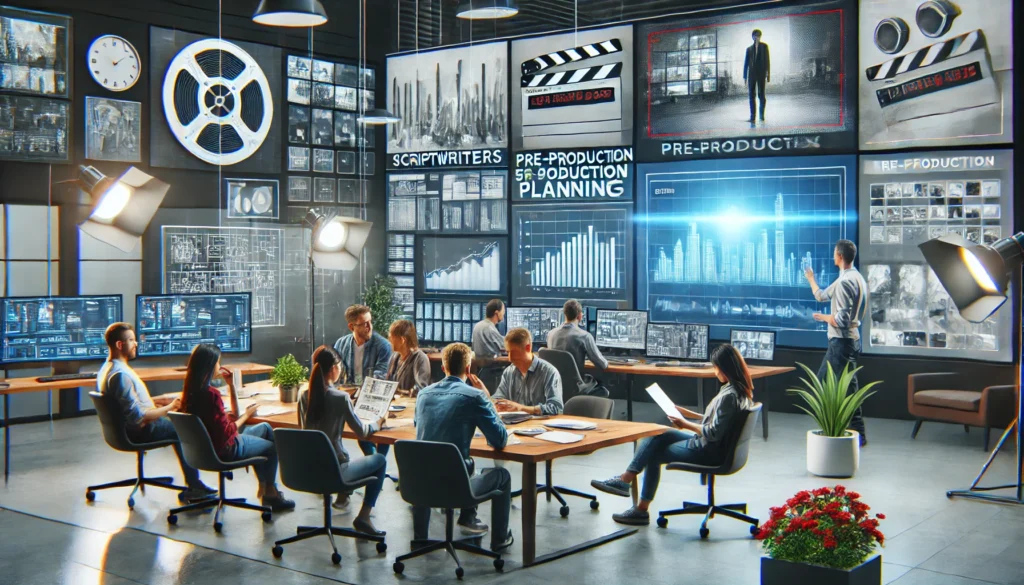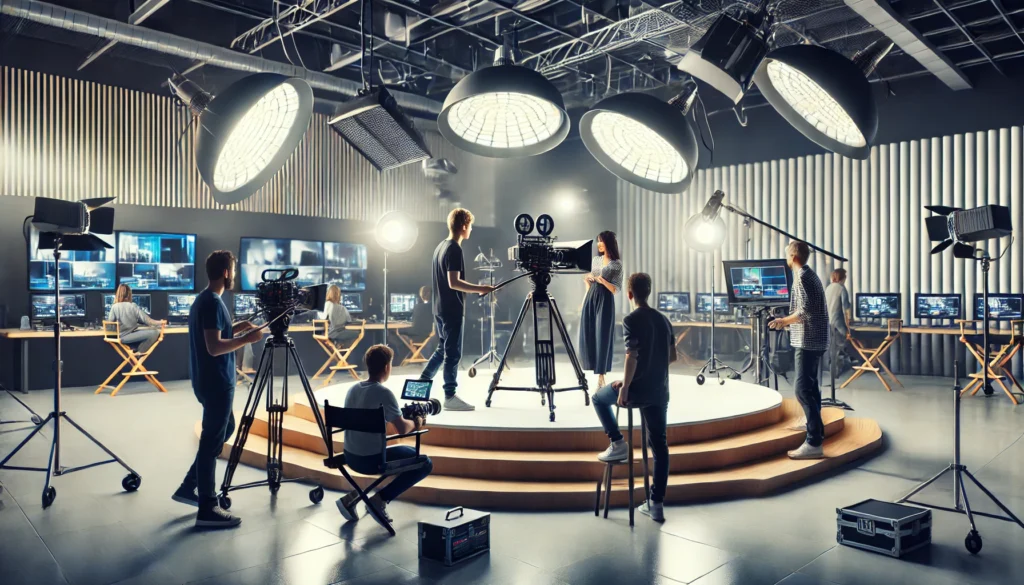
Understanding the Media Production Process
Understanding the Media Production Process: A Step-by-Step Guide
Introduction
Media production is the backbone of the entertainment industry, encompassing everything from film and television production to digital content creation. Whether you’re producing a blockbuster movie, a TV series, a YouTube video, or a corporate documentary, understanding the media production process is essential for ensuring high-quality content.
In this guide, we’ll take a step-by-step look at the entire media production workflow, covering pre-production, production, and post-production stages. We’ll also explore the latest technologies, tools, and trends shaping the industry.
What is Media Production?
Media production refers to the process of creating content for television, film, radio, online platforms, and social media. It involves planning, shooting, editing, and distributing media content.
Types of Media Production
Film & TV Production: Movies, TV shows, documentaries.
Digital & Social Media Production: YouTube videos, podcasts, online ads.
Corporate & Commercial Production: Training videos, promotional ads, brand storytelling.
Live Broadcasting: News, sports events, reality shows.
Each type follows a structured production pipeline, which we will break down in detail.

Step 1: Pre-Production (Planning Phase)
Pre-production is the foundation of any media project. This stage involves concept development, budgeting, and organizing resources before actual filming or content creation begins.
1. Developing the Idea & Scriptwriting
Every project starts with a concept or idea.
Writers create a script or storyboard to visualize the content.
Scriptwriting software like Final Draft and Celtx helps organize dialogues, scenes, and directions.
2. Budgeting & Financing
A clear budget ensures all aspects of production are covered, including cast, crew, locations, equipment, and post-production.
Funding can come from film studios, crowdfunding, investors, or sponsorships.
3. Casting & Crew Hiring
Actors, voice artists, and presenters are auditioned and selected.
The production team hires key personnel like directors, producers, cinematographers, editors, and sound designers.
4. Location Scouting & Set Design
The team selects filming locations or designs sets that match the story’s vision.
Digital tools like Google Earth and VR simulations help filmmakers explore locations remotely.
5. Equipment & Technology Selection
The right cameras, lighting, sound gear, and drones are chosen based on the project needs.
New technologies like virtual production and LED volume screens are transforming filmmaking.
Once all pre-production elements are in place, the project moves to the production phase.
Step 2: Production (Filming & Content Creation)
The production phase is where the actual filming, recording, or live streaming takes place. This stage involves capturing footage, directing actors, and ensuring high-quality audio and visuals.
1. Camera Setup & Lighting
Filmmakers use cameras like RED, ARRI Alexa, and Sony FX series to shoot high-quality videos.
Lighting setups, including softbox lights and LED panels, create the desired mood and atmosphere.
2. Directing & Cinematography
The director oversees performances and visual storytelling.
The cinematographer (DOP) manages camera angles, movements, and shot composition.
3. Sound Recording & Foley Effects
High-quality sound is recorded using boom mics, lapel mics, and field recorders.
Foley artists create additional sound effects for realism.
4. Live Production & Broadcasting
In live events (e.g., sports, concerts, news), multiple cameras capture real-time action.
Live streaming technology allows instant broadcasting on platforms like YouTube Live, Twitch, and Facebook Live.
After all footage and audio are captured, the project moves to post-production.
Step 3: Post-Production (Editing & Finalization)
Post-production is where raw footage is transformed into a polished final product through editing, special effects, and sound design.
1. Video Editing & Color Grading
Editors use Adobe Premiere Pro, Final Cut Pro, and DaVinci Resolve to trim, arrange, and enhance video clips.
Color correction and grading adjust brightness, contrast, and tones to match the film’s aesthetic.
2. Sound Design & Music Composition
Sound engineers mix dialogue, background music, and sound effects for clarity and depth.
Original scores or licensed music tracks are added.
3. Visual Effects (VFX) & CGI
VFX studios use After Effects, Blender, and Unreal Engine to add CGI effects.
Popular techniques include green screen compositing, motion tracking, and 3D animation.
4. Final Review & Distribution
The completed project is reviewed for errors, copyrights, and compliance.
Content is exported in different formats for cinema, TV, online streaming, or DVD release.
Once finalized, the media content is ready for public release.

Emerging Trends in Media Production
1. Virtual Production & LED Volume Screens
Studios like Pinewood and Warner Bros. Leavesden are using LED walls for real-time CGI environments (as seen in The Mandalorian).
2. AI-Powered Content Creation
AI tools are automating tasks like scriptwriting, video editing, and CGI generation.
3. 4K, 8K, and HDR Content
The demand for high-resolution and ultra-realistic media is increasing.
4. Cloud-Based Collaboration
Remote teams use cloud editing platforms like Frame.io and WeTransfer to streamline workflow.
Conclusion
Understanding the media production process is crucial for creating high-quality content in today’s fast-evolving industry. From pre-production planning to filming and post-production editing, each step plays a vital role in delivering professional media.
With technological advancements such as AI, virtual production, and high-resolution streaming, the future of media production looks more innovative and immersive than ever.
FAQs: Media Production Process
1. What are the main stages of media production?
The three main stages are pre-production (planning), production (filming/recording), and post-production (editing and distribution).
2. What equipment is needed for professional media production?
Professional media production requires high-resolution cameras, lighting gear, audio equipment, editing software, and VFX tools.
3. How is AI being used in media production?
AI is used for scriptwriting, editing, CGI effects, content recommendations, and audience analytics.
4. What is virtual production in filmmaking?
Virtual production uses LED volume screens and real-time CGI rendering to create digital environments, reducing the need for on-location shooting.
5. How do filmmakers ensure high-quality audio?
Using professional microphones, soundproof studios, and post-production audio mixing helps achieve clear and high-quality audio.